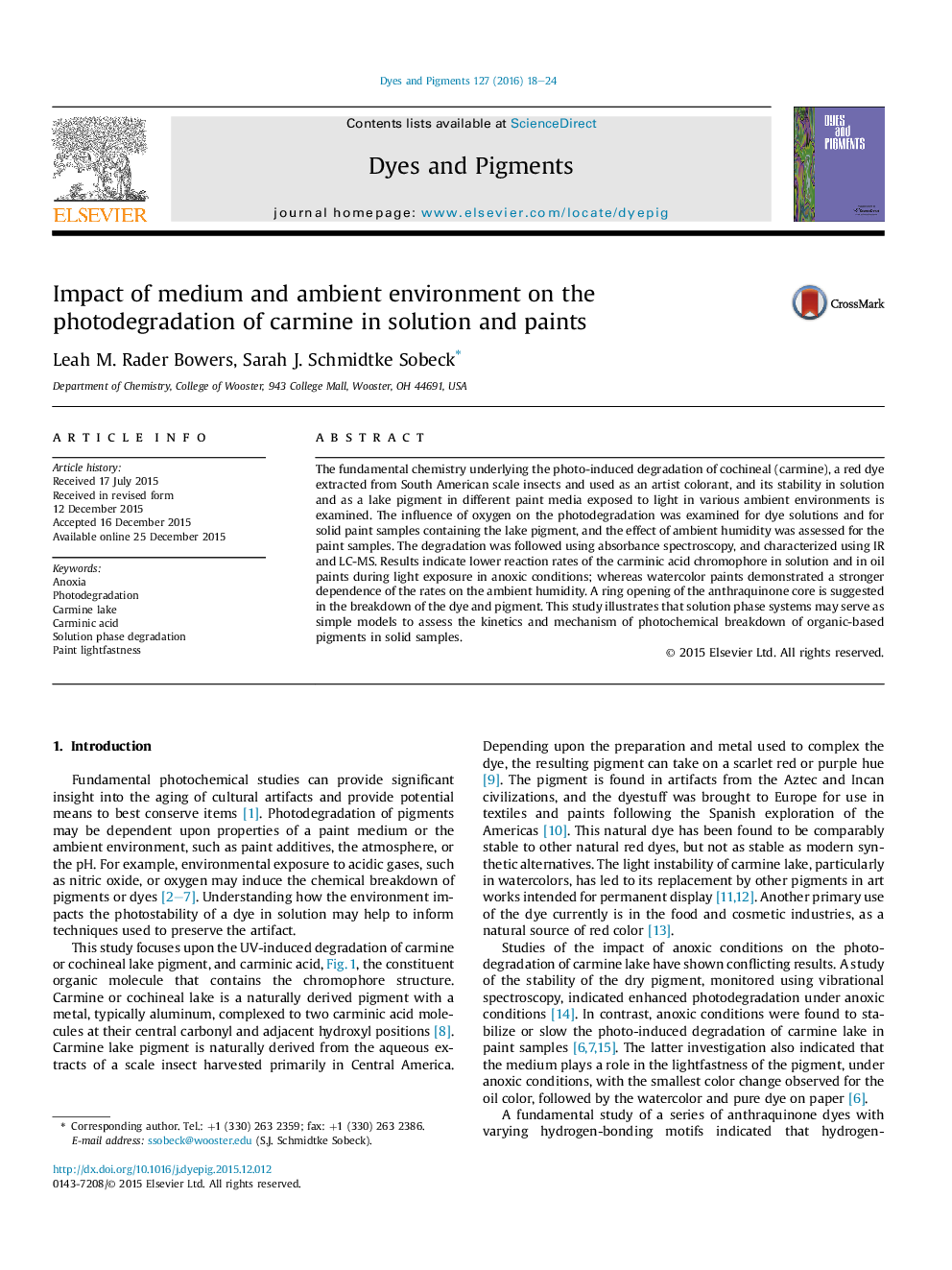| Article ID | Journal | Published Year | Pages | File Type |
|---|---|---|---|---|
| 175499 | Dyes and Pigments | 2016 | 7 Pages |
•Light-induced degradation of carminic acid solution and paint samples is followed.•The impact of ambient environment, humidity and oxygen, is evaluated.•The degradation mechanism was suggested by changes in absorbance, IR, and MS.•Oil paints and carminic acid solutions were stabilized by anoxic conditions.•Degradation of watercolor paint was most impacted by the relative humidity.
The fundamental chemistry underlying the photo-induced degradation of cochineal (carmine), a red dye extracted from South American scale insects and used as an artist colorant, and its stability in solution and as a lake pigment in different paint media exposed to light in various ambient environments is examined. The influence of oxygen on the photodegradation was examined for dye solutions and for solid paint samples containing the lake pigment, and the effect of ambient humidity was assessed for the paint samples. The degradation was followed using absorbance spectroscopy, and characterized using IR and LC-MS. Results indicate lower reaction rates of the carminic acid chromophore in solution and in oil paints during light exposure in anoxic conditions; whereas watercolor paints demonstrated a stronger dependence of the rates on the ambient humidity. A ring opening of the anthraquinone core is suggested in the breakdown of the dye and pigment. This study illustrates that solution phase systems may serve as simple models to assess the kinetics and mechanism of photochemical breakdown of organic-based pigments in solid samples.
Graphical abstractFigure optionsDownload full-size imageDownload as PowerPoint slide
